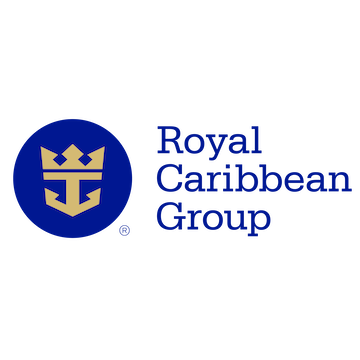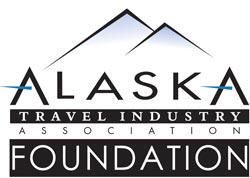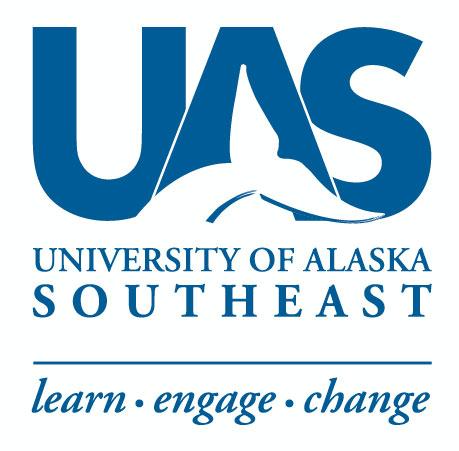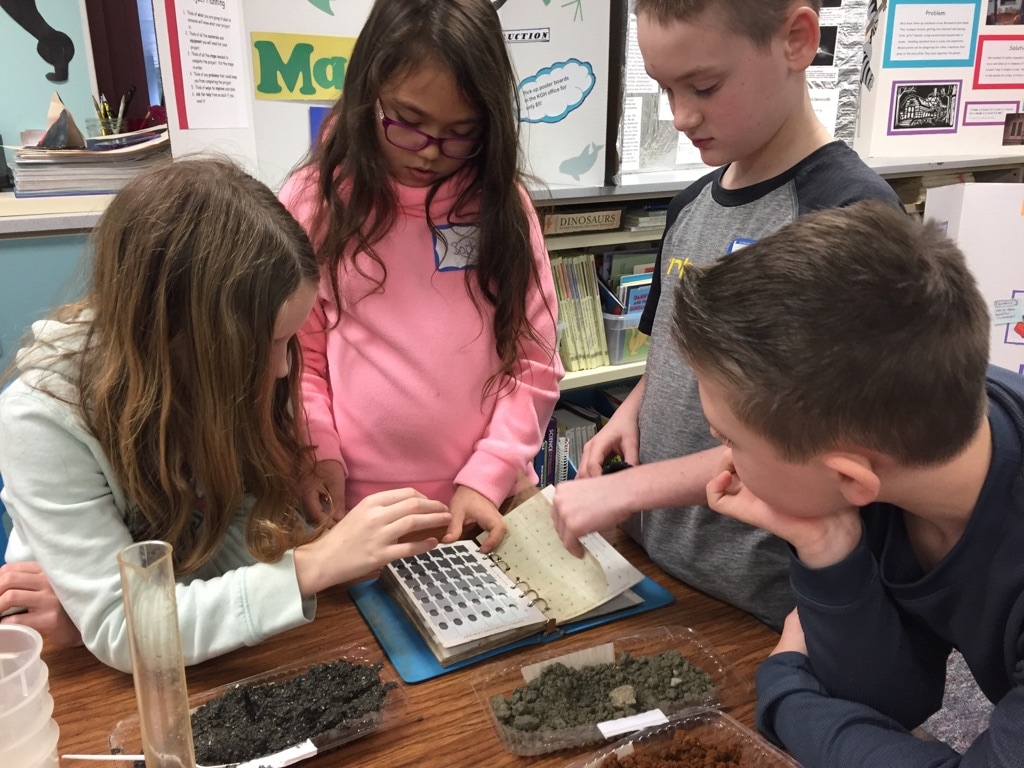
What happens in the classroom during SIS units?
Scientists in the Schools units are the result of creative and unique collaborations between grade level teachers, researchers and SSSC educators, so there is no simple answer to this question.
SIS is not a kit, not a checklist or required components, and not constructed from a catalog of activities. Instead, the people who know their students best and the people who know current scientific research best come together, facilitated by SSSC educators to create an SIS unit. Below are just two examples of the diversity of classroom experiences students receive.

Lara Rokentenz, University of Akron Field Station – the wildly popular “Dr. Rocket” came back to the 2nd grade classes at Keet Gooshi Heen for the first Scientists in the Schools of the 2017 – 2018 school year. Students extended their understandings of Unit 2 vocabulary terms in their National Geographic language arts curriculum by making observations about habitat and animal adaptations. Then, these 2nd graders became engineers and constructed an invention inspired by nature in the process referred to as “biomimicry”.
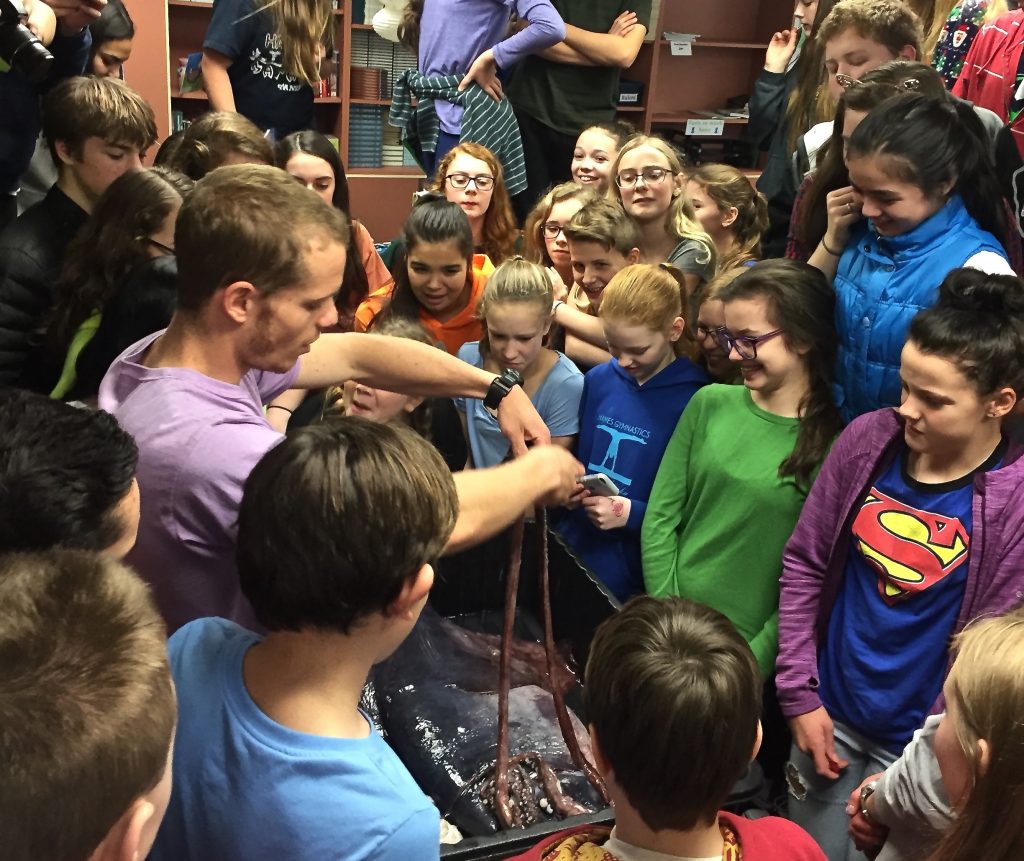
Ben Burford, squid ecologist from Stanford’s Hopkins Marine Laboratory trained 9th graders at Sitka High School to measure and sample squid and submit their data to his extensive data base. Ben facilitated an analysis of the data so that students learned about squid life history. As ocean temperatures rise, Sitkans have observed that market squid have pushed their northern limit into local waters and squid researchers are keenly interested in what can be learned about their role in this ecosystem.
